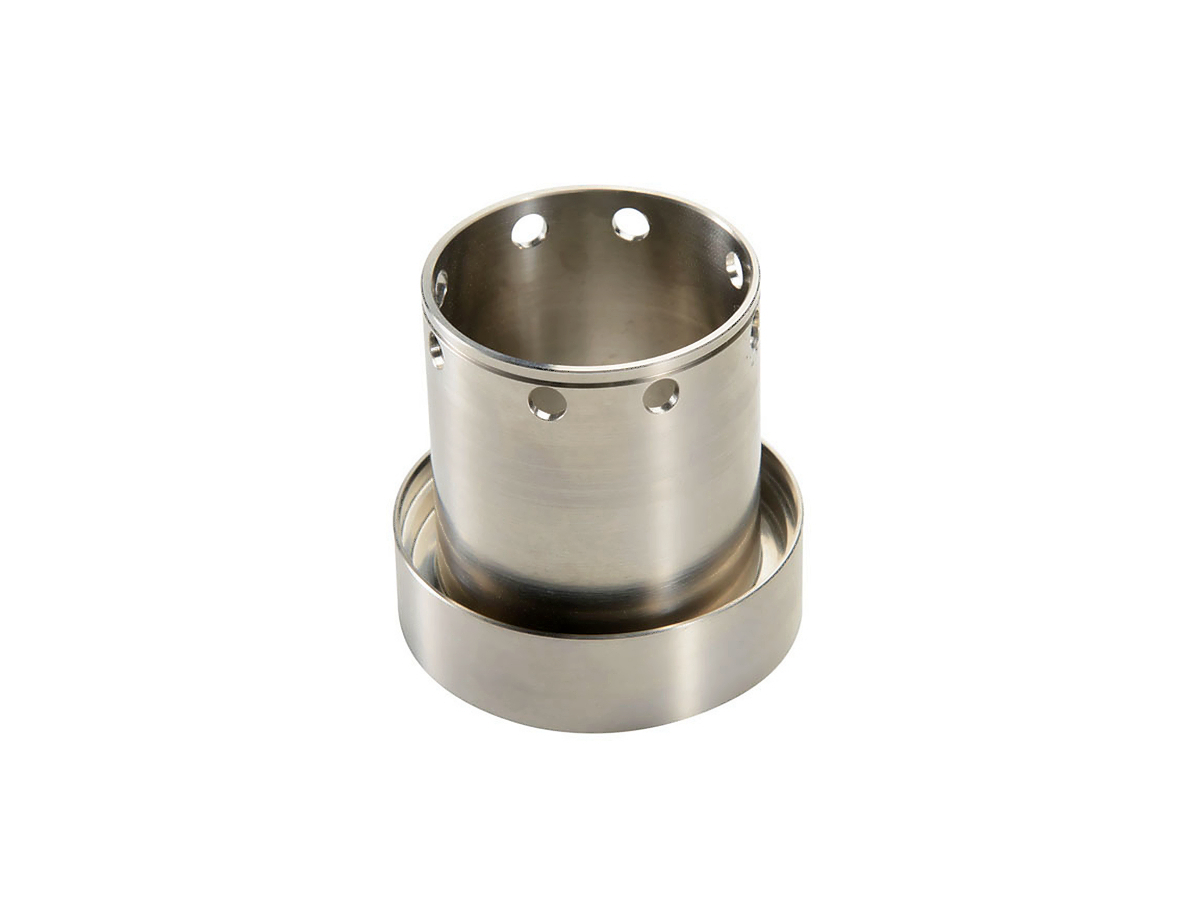Enhancing Power Generation Efficiency with Precision CNC Machined Titanium Parts
Introduction
The power generation industry continually seeks ways to maximize efficiency and operational reliability. Titanium alloys, notably Ti-6Al-4V (Grade 5), Ti-6Al-2Sn-4Zr-6Mo (Grade 7), and Ti-5Al-2.5Sn (Grade 6), provide the necessary combination of strength, corrosion resistance, and thermal stability, essential for turbine blades, compressor components, and heat exchanger systems.
Advanced CNC machining technologies enable precise fabrication of titanium components, optimizing their aerodynamic profiles and thermal performance. The result is improved turbine efficiency, reduced maintenance costs, and increased power output stability.
Titanium Alloys for Power Generation Applications
Material Performance Comparison
Material | Tensile Strength (MPa) | Yield Strength (MPa) | Thermal Stability (°C) | Typical Applications | Advantage |
|---|---|---|---|---|---|
950-1100 | 880-950 | Up to 400°C | Turbine blades, rotor assemblies | High strength-to-weight ratio, fatigue resistance | |
1150-1250 | 1080-1180 | Up to 500°C | High-performance turbine components | Superior corrosion resistance, high thermal stability | |
860-950 | 780-830 | Up to 450°C | Compressor components, heat exchangers | Balanced strength and thermal performance | |
620-780 | 483-655 | Up to 350°C | Piping systems, fittings | Excellent weldability, corrosion resistance |
Material Selection Strategy
Selecting titanium alloys for power generation components considers thermal stability, corrosion resistance, and mechanical demands:
Turbine blades and rotor assemblies demanding exceptional fatigue resistance and high tensile strength benefit from Ti-6Al-4V (Grade 5), optimizing rotational efficiency.
High-temperature turbine parts requiring stability above 450°C rely on Ti-6Al-2Sn-4Zr-6Mo (Grade 7), delivering unmatched corrosion resistance and structural integrity under intense operational conditions.
Compressor components and heat exchangers effectively balance thermal stability and moderate mechanical strength with Ti-5Al-2.5Sn (Grade 6), ensuring consistent efficiency.
Coolant piping and fittings requiring ease of fabrication, weldability, and resistance to corrosive environments employ Ti-3Al-2.5V (Grade 12), streamlining maintenance and operational reliability.
CNC Machining Processes
Process Performance Comparison
CNC Machining Technology | Dimensional Accuracy (mm) | Surface Roughness (Ra μm) | Typical Applications | Key Advantages |
|---|---|---|---|---|
±0.02 | 1.6-3.2 | Basic mounts, brackets | Cost-effective, rapid production | |
±0.015 | 0.8-1.6 | Rotational turbine components | Improved precision, fewer setups | |
±0.005 | 0.4-0.8 | Complex blades, compressor wheels | Exceptional precision, optimal surface quality | |
±0.003-0.01 | 0.2-0.6 | Precision turbine components, heat exchangers | Maximum accuracy, intricate designs |
Process Selection Strategy
Process selection for power generation titanium components depends on complexity, precision requirements, and operational criticality:
Structural supports, mounts, and less critical brackets efficiently use 3 Axis CNC Milling for economical yet reliable performance.
Rotational components such as turbine disks and compressor housings requiring higher dimensional accuracy (±0.015 mm) utilize 4 Axis CNC Milling for enhanced precision.
Highly complex turbine blades, intricate compressor wheels, and aerodynamic surfaces demanding stringent tolerances (±0.005 mm) benefit significantly from 5 Axis CNC Milling, ensuring peak aerodynamic efficiency and longevity.
Ultra-precise sensors and intricate heat exchanger elements demanding extreme dimensional accuracy (±0.003 mm) require Multi-Axis CNC Machining, guaranteeing top performance and reliability.
Surface Treatment
Surface Treatment Performance
Treatment Method | Corrosion Resistance | Wear Resistance | Max Operating Temp (°C) | Typical Applications | Key Features |
|---|---|---|---|---|---|
Excellent (>1000 hrs ASTM B117) | Moderate | Up to 400°C | Compressor parts, piping | Surface purity, corrosion protection | |
Superior (>1000 hrs ASTM B117) | Very High (HV1500-2500) | Up to 600°C | Turbine blades, rotor parts | High hardness, low friction | |
Exceptional (>1000 hrs ASTM B117) | High (HV1000-1200) | Up to 1150°C | Turbine hot-section components | Excellent insulation, thermal protection | |
Excellent (≥800 hrs ASTM B117) | Moderate-High | Up to 400°C | Structural brackets, housing components | Enhanced durability, corrosion protection |
Surface Treatment Selection
Surface treatment choices for titanium parts in power generation depend on operating conditions:
Compressor components and piping systems exposed to corrosive gases and fluids utilize Passivation for enhanced corrosion resistance and operational purity.
Turbine blades and rotating elements facing intense friction and high operating speeds benefit from PVD Coating, maximizing wear resistance and operational durability.
Hot-section turbine components requiring extreme thermal resistance and extended lifespan apply Thermal Barrier Coatings (TBC), significantly improving thermal management and efficiency.
Structural brackets, casings, and housings use Anodizing for enhanced corrosion protection and component durability.
Quality Control
Quality Control Procedures
Dimensional accuracy verification via CMM and optical inspections.
Surface roughness testing with profilometers.
Mechanical property validation (tensile, fatigue) per ASTM standards.
Corrosion resistance verification through ASTM B117 testing.
Non-destructive tests, including radiographic and ultrasonic methods.
Quality documentation complies with ISO 9001, ASME standards, and power industry specifications.
Industry Applications
Power Generation Component Applications
High-efficiency turbine blades and rotors.
Compressor components and aerodynamic housings.
Heat exchanger systems and cooling structures.
High-pressure valves and fittings.
Related FAQs:
Why choose titanium alloys for power generation components?
How does CNC machining improve turbine performance?
What are the benefits of multi-axis CNC machining?
Which titanium alloys offer the best thermal performance?
How do surface treatments enhance titanium component durability?

